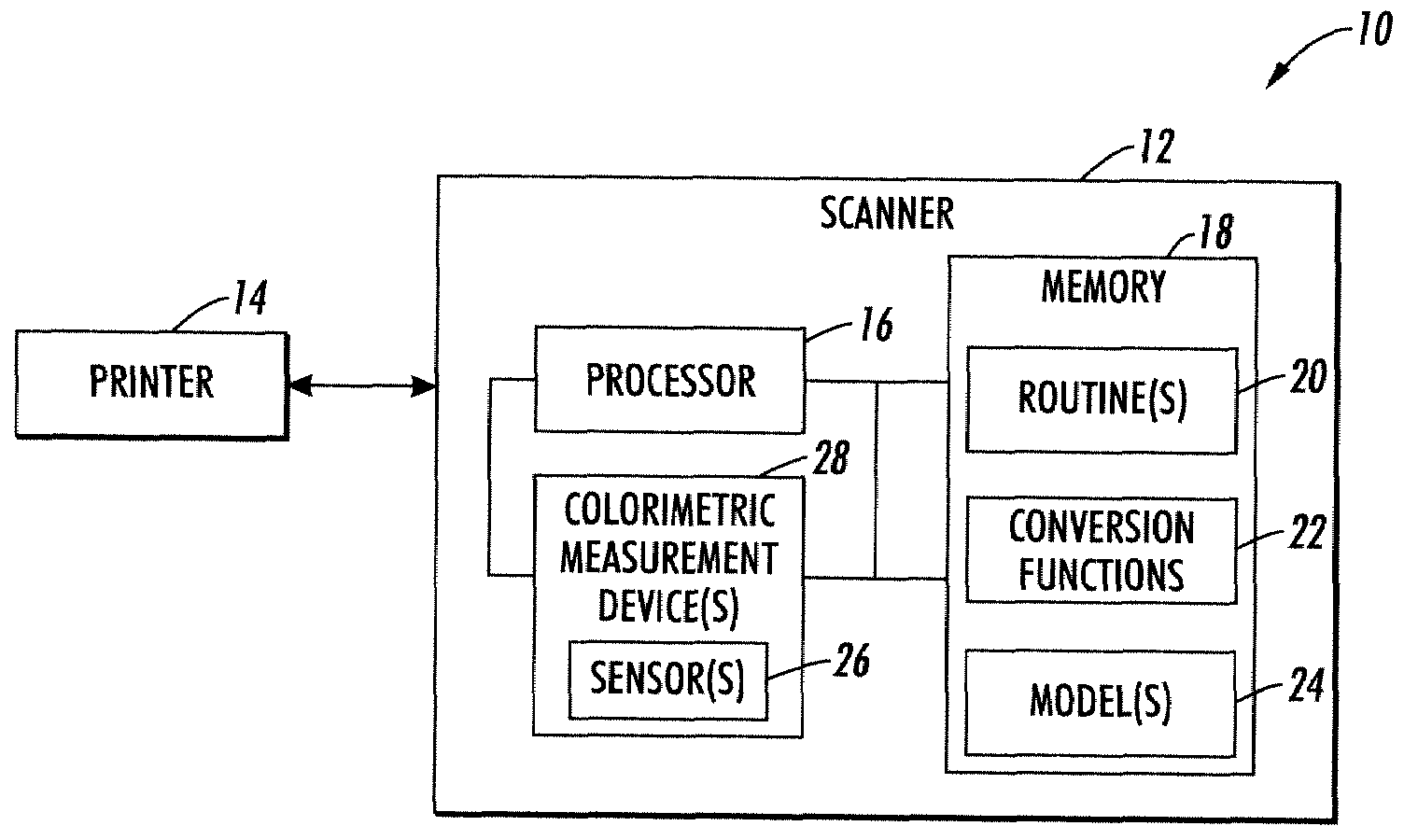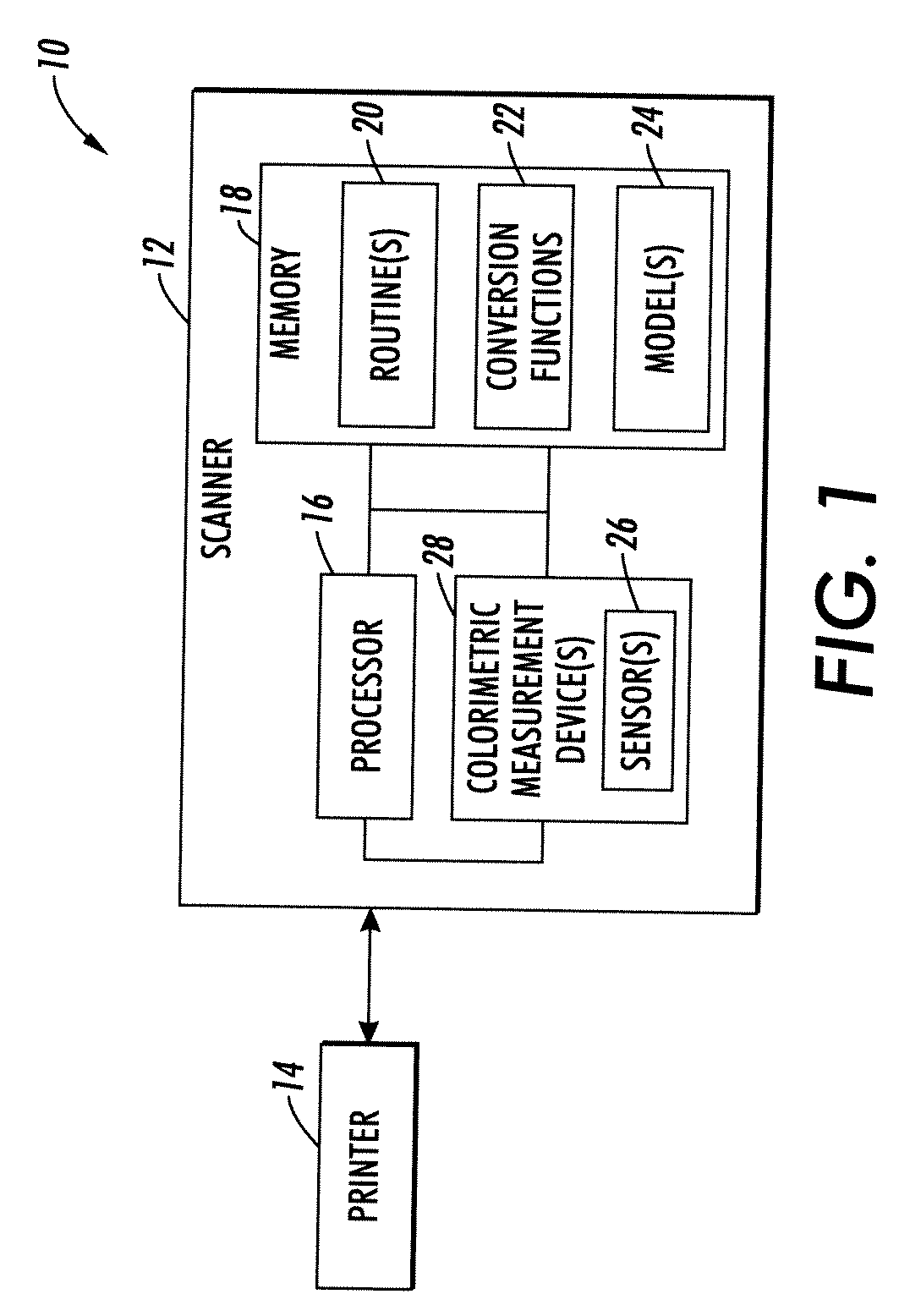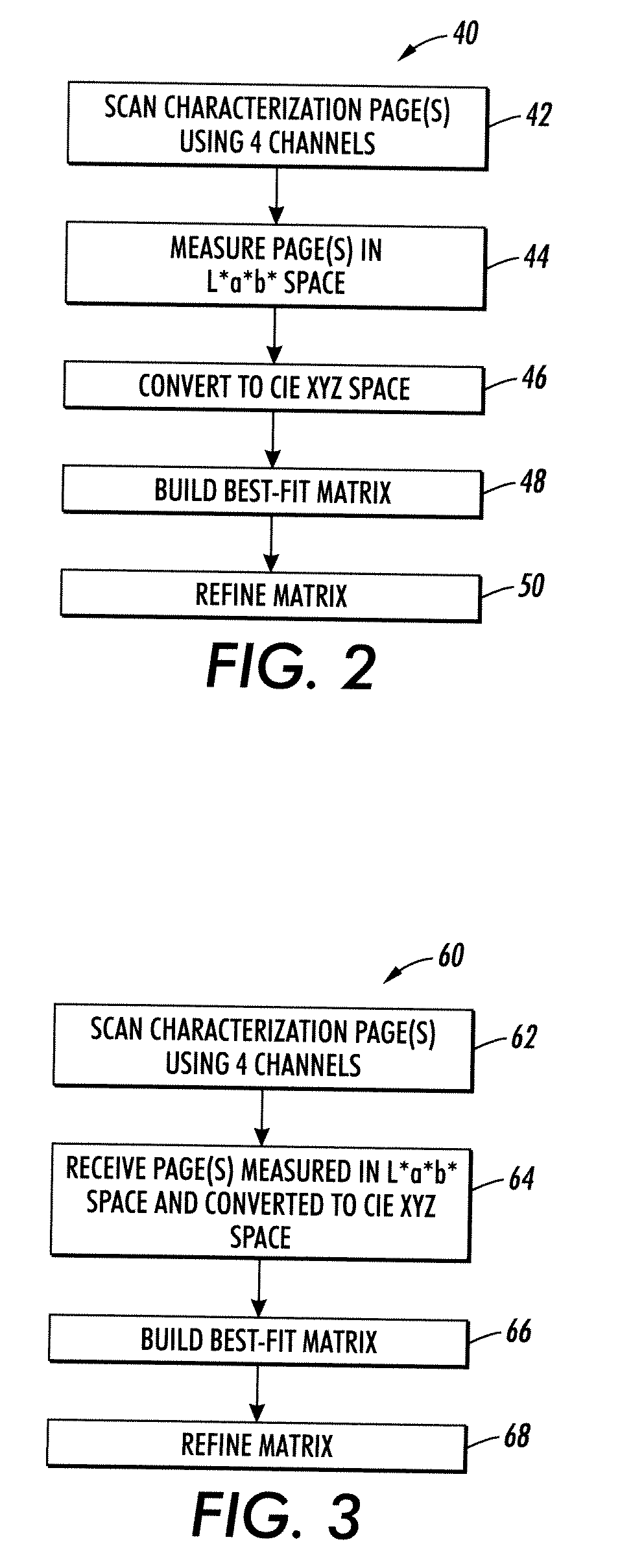L*a*b* SCANNING USING RGB-CLEAR
- Summary
- Abstract
- Description
- Claims
- Application Information
AI Technical Summary
Benefits of technology
Problems solved by technology
Method used
Image
Examples
Embodiment Construction
[0013]In accordance with various features described herein, systems and methods are described that facilitate reducing metamerism in a printer and / or scanner by exploiting non-redundant information in a clear channel (W). For example, colors on a printed or scanned page can appear different than intended due to factors or conditions that contribute to metamerism, whereby colors with different spectral power distributions appear the same to a human eye, and colors that appear the same to one measuring device appear different to either a different device or a human eye. Systems and methods disclosed herein facilitate mitigating such metameric effects by, for a given page, scanning the page collecting data for all four channels. Data collected from all four channels is then employed to generate a model from scanner space to L*a*b* space.
[0014]With reference to FIG. 1, a system 10 is illustrated that reduces metamerism in a scanned image and facilitates printer or scanner calibration us...
PUM
 Login to View More
Login to View More Abstract
Description
Claims
Application Information
 Login to View More
Login to View More - R&D
- Intellectual Property
- Life Sciences
- Materials
- Tech Scout
- Unparalleled Data Quality
- Higher Quality Content
- 60% Fewer Hallucinations
Browse by: Latest US Patents, China's latest patents, Technical Efficacy Thesaurus, Application Domain, Technology Topic, Popular Technical Reports.
© 2025 PatSnap. All rights reserved.Legal|Privacy policy|Modern Slavery Act Transparency Statement|Sitemap|About US| Contact US: help@patsnap.com



